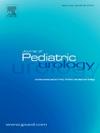球在你手中:小儿睾丸扭转患者转院的趋势、原因、结果和费用。
IF 2
3区 医学
Q2 PEDIATRICS
引用次数: 0
摘要
背景:将睾丸扭转的小儿患者从社区医院转到儿科中心,可能会耗费大量时间和资源:将患有睾丸扭转的儿科患者从社区医院转到儿科中心可能会耗费大量的时间和资源,从而需要进行紧急手术干预:我们试图描述本州患者转院的趋势,并比较转院患者与主要在儿科中心接受治疗的患者之间的临床结果和医疗系统成本:这项回顾性队列研究比较了2018年至2023年因急性睾丸扭转直接到儿科中心就诊的1-18岁患者和转院患者。排除标准包括年龄 结果:共有133例(37例初诊,96例转院)符合纳入标准。在研究期间,转院人数有所增加(67%-75%)。各组之间在年龄、Tanner分期、ASA评分、体重指数或发病时间上没有明显差异。中位转运距离为 12 英里(IQR 7-22),转运时间为 1 小时(IQR 1-2)。一半以上的病例(53%)是由于医院关于未成年人手术治疗的政策而转院的,25%的病例是由于泌尿科缺乏人手而转院的。转院组患者从最初的急诊室到手术室的时间几乎增加了一倍(中位 4.5 小时 vs 2.5 小时,P = 0.02)。尽管初诊组的睾丸切除率更高(43% 对 22%,p = 0.01),但根据症状持续时间进行分层后,这一差异并不显著。据估计,转院患者的平均治疗费用是原诊患者的两倍(15082 美元对 6898 美元):讨论:近年来,本州因睾丸扭转而转院的小儿患者有所增加。医院政策和当地泌尿科的覆盖范围是导致患者转院的主要原因,这几乎使患者接受手术治疗的时间延长了一倍,医疗费用也增加了一倍多。临床结果受延误就诊的影响:结论:小儿睾丸扭转患者的转院几乎使手术时间延长了一倍,医疗费用增加了一倍多。医院的限制性政策和农村医院泌尿科覆盖面的差距为提高这些儿童的治疗质量和效率提供了机会。本文章由计算机程序翻译,如有差异,请以英文原文为准。
The ball's in your court: Trends, causes, outcomes, and costs of patient transfer for pediatric testicular torsion
Background
The transfer of pediatric patients with testicular torsion from community hospitals to pediatric centers can be a time and resource-intensive step toward emergent surgical intervention.
Objective
We sought to describe trends of patient transfer in our state and compare clinical outcomes and health system costs between patients transferred and treated primarily at a pediatric center.
Study design
This retrospective cohort study compared patients aged 1–18 years who presented directly to a pediatric center to those transferred for acute testicular torsion from 2018 to 2023. Exclusion criteria included age <1 year, non-urgent surgery, and admission from clinic. Patient age, BMI, Tanner stage, ASA class, insurance coverage, and presentation time were covariates. Group characteristics and times from symptom onset to initial ED presentation to surgery were compared via two-sided Student's t-tests. Clinical outcomes (orchiectomy, testicular atrophy) were compared via Fisher's exact tests. Costs from transferring hospitals were estimated from costs at our institution, and medical transport costs were extrapolated from contract prices between transport agencies and the pediatric center to compare total episode-of-care cost.
Results
A total of 133 cases (37 primaries, 96 transfers) met inclusion criteria. Transfers increased over the study period (67%–75%). There were no significant differences in age, Tanner stage, ASA score, BMI, or time of day of presentation between groups. Median transfer distance was 12 miles (IQR 7–22) and time was 1 h (IQR 1–2). More than half of cases (53%) were transferred due to hospital policy regarding surgical treatment of minors, and 25% due to lack of urology coverage. Time from initial ED site to OR was nearly doubled for the transfer group (median 4.5 vs 2.5 h, p = 0.02). Despite a higher rate of orchiectomy in the primary group (43 vs 22%, p = 0.01), this difference was not significant after stratification by symptom duration. The estimated average cost of care for patients transferred was twice that of primary patients ($15,082 vs $6898).
Discussion
Transfer of pediatric patients in our state for testicular torsion has increased in recent years. Hospital policies and local urology coverage are primary drivers of patient transfer which nearly doubled time to surgical intervention and more than doubled cost of care. Clinical outcomes were driven by delayed presentation.
Conclusion
Transfer of pediatric patients for testicular torsion nearly doubles time to surgical intervention and more than doubles cost of care. Restrictive hospital policies and gaps in rural hospital urology coverage present opportunities to improve the quality and efficiency of care for these children.
Summary table.
| Empty Cell | Overall | Primary | Transfer | p-value |
|---|---|---|---|---|
| N | 133 | 37 | 96 | |
| Care Timeline (Median hours [IQR]) | ||||
| Symptom onset to ED presentation | 6 (2–48) | 18.5 (3.5–72) | 4 (2–25.8) | 0.01 |
| Initial ED presentation to OR | 4 (3–5) | 2.5 (2–3) | 4.5 (3.3–5.8) | 0.02 |
| Decision to transfer care to arrival at DCH | 1 (1–2) | |||
| Orchiectomy stratified by time to presentation | ||||
| Early (<6 h) | 1 (1.5) | 0 (0) | 1 (1.8) | 0.63 |
| Moderate (6–24 h) | 0 (0) | 0 (0) | 0 (0) | |
| Late (>24 h) | 36 (76.6) | 16 (88.9) | 20 (69.0) | 0.12 |
| Estimated mean total cost of care | $6898 | $15,082 | <0.01 |
求助全文
通过发布文献求助,成功后即可免费获取论文全文。
去求助
来源期刊

Journal of Pediatric Urology
PEDIATRICS-UROLOGY & NEPHROLOGY
CiteScore
3.70
自引率
15.00%
发文量
330
审稿时长
4-8 weeks
期刊介绍:
The Journal of Pediatric Urology publishes submitted research and clinical articles relating to Pediatric Urology which have been accepted after adequate peer review.
It publishes regular articles that have been submitted after invitation, that cover the curriculum of Pediatric Urology, and enable trainee surgeons to attain theoretical competence of the sub-specialty.
It publishes regular reviews of pediatric urological articles appearing in other journals.
It publishes invited review articles by recognised experts on modern or controversial aspects of the sub-specialty.
It enables any affiliated society to advertise society events or information in the journal without charge and will publish abstracts of papers to be read at society meetings.
 求助内容:
求助内容: 应助结果提醒方式:
应助结果提醒方式:


